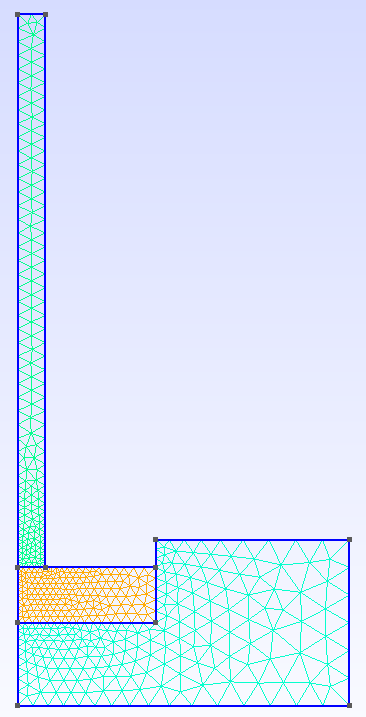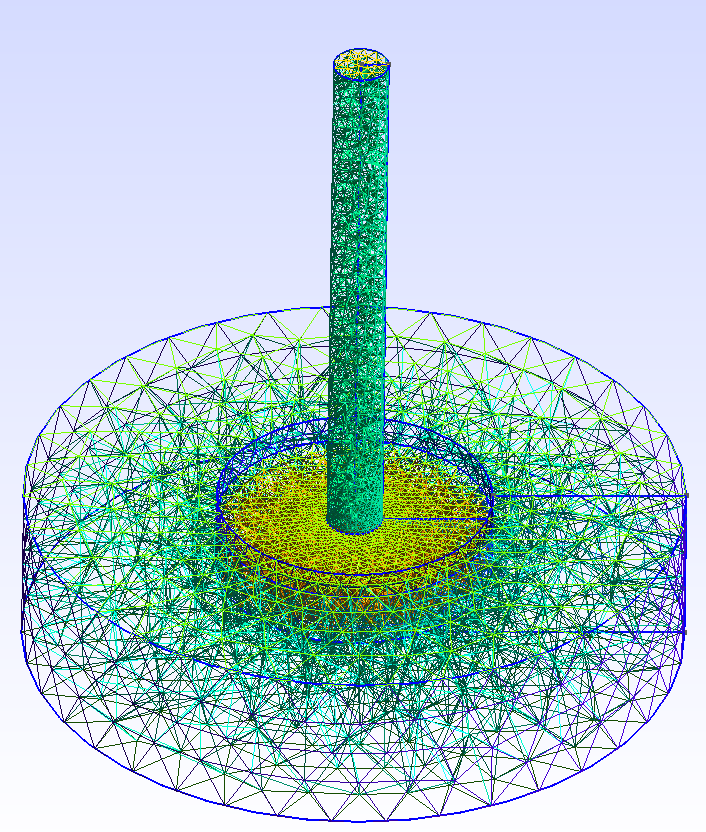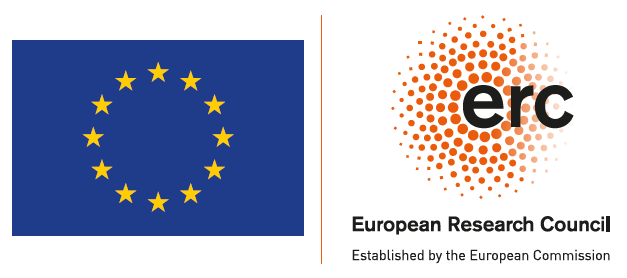Object oriented Gmsh modeling.
This tool provides some utilities for the gmsh python API that are especially helpful when you're working on complex geometries using the Open CASCADE kernel.
The project is developed and maintained by the Model experiments group at the Leibniz Institute for Crystal Growth (IKZ).
If you use this code in your research, please cite our article:
TODO
The latest release can be installed using pip:
pip install objectgmsh
objectgmsh bases on a Model class implementing an interface to the main Gmsh functionality, and a Shape class used to access information about the geometry, e.g., the IDs of the interface between two bodies. Furthermore, several classes for simplified control of mesh sizes are provided.
objectgmsh is just a wrapper for the gmsh python API, and all gmsh commands are still working "as usual". However, in complex geometries, it highly reduces the modelling effort.
Mesh of a simple 2D axisymmetric Czochralski crystal growth model:
import gmsh
from objectgmsh import Model, Shape, MeshControlConstant, MeshControlExponential, cut
# dimensions
cruc_r = 0.06 # crucible radius
cruc_h = 0.03 # crucible height
cruc_hi = 0.015 # crucible height inside
melt_r = 0.025 # melt radius
melt_h = 0.01 # melt height
crys_r = 0.005 # crystal radius
crys_h = 0.1 # crystal height
occ = gmsh.model.occ
model = Model()
# main bodies
crystal = Shape(model, 2, "crystal", [occ.addRectangle(0, 0, 0, crys_r, crys_h)])
melt = Shape(model, 2, "melt", [occ.addRectangle(0, -melt_h, 0, melt_r, melt_h)])
crucible = occ.addRectangle(0, -melt_h - (cruc_h - cruc_hi), 0, cruc_r, cruc_h)
crucible_hole = occ.addRectangle(0, -melt_h, 0, melt_r, cruc_hi)
cut([(2, crucible)], [(2, crucible_hole)])
crucible = Shape(model, 2, "crucible", [crucible])
# create connection between the shapes
crystal.set_interface(melt)
melt.set_interface(crucible)
# detect boundaries
bnd_crystal_out = Shape(
model, 1, "bnd_crystal_out", [crystal.top_boundary, crystal.right_boundary]
)
bnd_melt = Shape(
model, 1, "bnd_melt_surf", melt.get_boundaries_in_box([crys_r, melt_r], [0, 0])
)
surfs = [
crucible.get_boundaries_in_box(
[melt_r, melt_r], [0, cruc_hi - melt_h], one_only=True
),
crucible.top_boundary,
crucible.right_boundary,
]
bnd_crucible_outside = Shape(model, 1, "bnd_crucible_outside", surfs)
bnd_crucible_bottom = Shape(model, 1, "bnd_crucible_bottom", [crucible.bottom_boundary])
if_crystal_melt = Shape(model, 1, "if_crystal_melt", crystal.get_interface(melt))
# add physical groups
model.make_physical()
# set mesh constraints
model.deactivate_characteristic_length()
MeshControlConstant(model, 0.005, [crucible, melt])
MeshControlConstant(model, 0.0025, [crystal])
MeshControlExponential(
model, if_crystal_melt, 0.001, exp=1.7, shapes=[crystal, melt, crucible]
)
# create mesh, show, export
model.generate_mesh()
model.show()
model.write_msh("crystal-growth-2D.msh")A similar but more complex example can be found here.
Mesh of a simple 3D Czochralski crystal growth model:
import gmsh
from objectgmsh import (
Model,
Shape,
MeshControlConstant,
MeshControlExponential,
cut,
rotate,
)
from objectgmsh.objects import MeshControlLinear
# dimensions
cruc_r = 0.06 # crucible radius
cruc_h = 0.03 # crucible height
cruc_hi = 0.015 # crucible height inside
melt_r = 0.025 # melt radius
melt_h = 0.01 # melt height
crys_r = 0.005 # crystal radius
crys_h = 0.1 # crystal height
occ = gmsh.model.occ
model = Model()
# main bodies
crystal = Shape(
model, 3, "crystal", [rotate(occ.addRectangle(0, 0, 0, crys_r, crys_h))]
)
melt = Shape(
model, 3, "melt", [rotate(occ.addRectangle(0, -melt_h, 0, melt_r, melt_h))]
)
crucible = occ.addRectangle(0, -melt_h - (cruc_h - cruc_hi), 0, cruc_r, cruc_h)
crucible_hole = occ.addRectangle(0, -melt_h, 0, melt_r, cruc_hi)
cut([(2, crucible)], [(2, crucible_hole)])
crucible = Shape(model, 3, "crucible", [rotate(crucible)])
# create connection between the shapes
crystal.set_interface(melt)
melt.set_interface(crucible)
# set mesh sizes
crystal.mesh_size = 0.0025
melt.mesh_size = 0.005
crucible.mesh_size = 0.01
# detect boundaries
bnd_crystal_out = Shape(
model,
2,
"bnd_crystal_out",
[x for x in crystal.boundaries if x not in crystal.get_interface(melt)],
)
bnd_melt = Shape(
model,
2,
"bnd_melt_surf",
[
x
for x in melt.boundaries
if x not in melt.get_interface(crystal) + melt.get_interface(crucible)
],
)
bnd_crucible_bottom = Shape(model, 2, "bnd_crucible_bottom", [crucible.bottom_boundary])
bnd_crucible_outside = Shape(
model,
2,
"bnd_crucible_outside",
[
x
for x in crucible.boundaries
if x not in crucible.get_interface(melt) + bnd_crucible_bottom.geo_ids
],
)
if_crystal_melt = Shape(model, 2, "if_crystal_melt", crystal.get_interface(melt))
if_crucible_melt = Shape(model, 2, "if_crucible_melt", crucible.get_interface(melt))
# add physical groups
model.make_physical()
# set mesh constraints
model.deactivate_characteristic_length()
model.set_const_mesh_sizes()
MeshControlExponential(
model, if_crystal_melt, 0.001, exp=1.7, fact=2
) # refinement at crystallization front
MeshControlLinear(model, if_crucible_melt, melt.mesh_size, crucible.mesh_size)
# create mesh, show, export
model.generate_mesh(3)
model.show()
model.write_msh("crystal-growth-3D.msh")The code is documented using docstrings. A more extensive documentation using sphinx is under construction.
In case of questions just open an issue or contact Arved Enders-Seidlitz.
This project has received funding from the European Research Council (ERC) under the European Union's Horizon 2020 research and innovation programme (grant agreement No 851768).
Any help to improve this package is very welcome!


